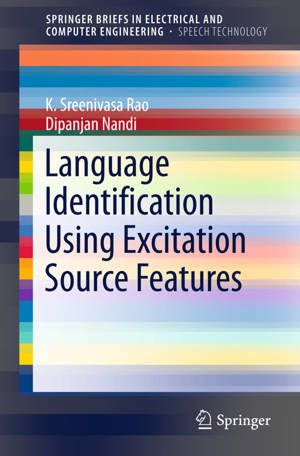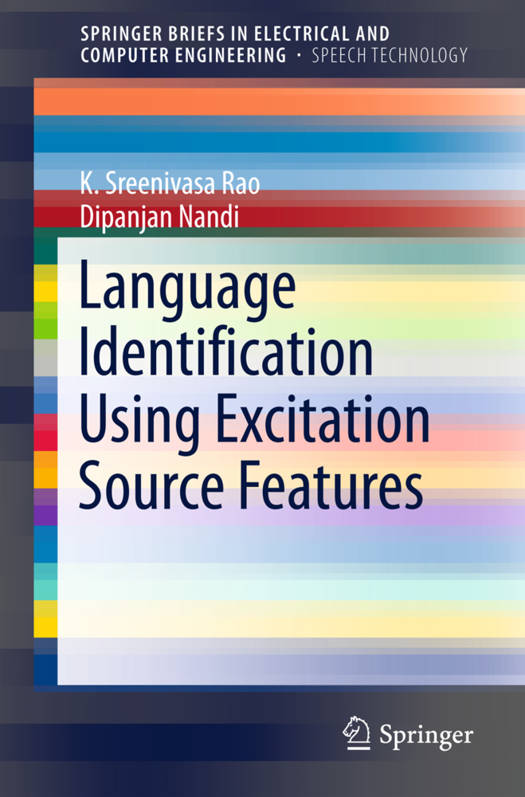
Door een staking bij bpost kan je online bestelling op dit moment iets langer onderweg zijn dan voorzien. Dringend iets nodig? Onze winkels ontvangen jou met open armen!
- Afhalen na 1 uur in een winkel met voorraad
- Gratis thuislevering in België vanaf € 30
- Ruim aanbod met 7 miljoen producten
Door een staking bij bpost kan je online bestelling op dit moment iets langer onderweg zijn dan voorzien. Dringend iets nodig? Onze winkels ontvangen jou met open armen!
- Afhalen na 1 uur in een winkel met voorraad
- Gratis thuislevering in België vanaf € 30
- Ruim aanbod met 7 miljoen producten
Zoeken
€ 52,95
+ 105 punten
Omschrijving
This book discusses the contribution of excitation source information in discriminating language. The authors focus on the excitation source component of speech for enhancement of language identification (LID) performance. Language specific features are extracted using two different modes: (i) Implicit processing of linear prediction (LP) residual and (ii) Explicit parameterization of linear prediction residual. The book discusses how in implicit processing approach, excitation source features are derived from LP residual, Hilbert envelope (magnitude) of LP residual and Phase of LP residual; and in explicit parameterization approach, LP residual signal is processed in spectral domain to extract the relevant language specific features. The authors further extract source features from these modes, which are combined for enhancing the performance of LID systems. The proposed excitation source features are also investigated for LID in background noisy environments. Each chapter of this book provides the motivation for exploring the specific feature for LID task, and subsequently discuss the methods to extract those features and finally suggest appropriate models to capture the language specific knowledge from the proposed features. Finally, the book discuss about various combinations of spectral and source features, and the desired models to enhance the performance of LID systems.
Specificaties
Betrokkenen
- Auteur(s):
- Uitgeverij:
Inhoud
- Aantal bladzijden:
- 119
- Taal:
- Engels
- Reeks:
Eigenschappen
- Productcode (EAN):
- 9783319177243
- Verschijningsdatum:
- 23/04/2015
- Uitvoering:
- Paperback
- Formaat:
- Trade paperback (VS)
- Afmetingen:
- 150 mm x 229 mm
- Gewicht:
- 204 g

Alleen bij Standaard Boekhandel
+ 105 punten op je klantenkaart van Standaard Boekhandel
Beoordelingen
We publiceren alleen reviews die voldoen aan de voorwaarden voor reviews. Bekijk onze voorwaarden voor reviews.











